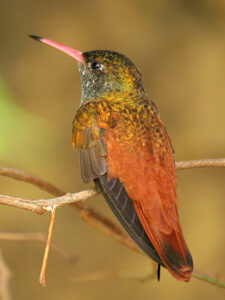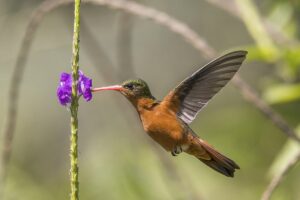Hummingbirds are among the most captivating creatures on Earth. Their vibrant colors, incredible speed, and unique behaviors make them a favorite among bird enthusiasts and nature lovers alike. One particular group of these tiny marvels stands out: the Amazilia hummingbirds. These dazzling birds belong to the Trochilidae family and are known for their beauty and adaptability.
In this guide, we’ll dive deep into the world of Amazilia hummingbirds. From their physical traits to their habitats, behaviors, and conservation status, we’ll explore everything you need to know about these remarkable birds.
What Are Amazilia Hummingbirds?

Amazilia hummingbirds are a group of small, colorful birds that belong to the genus Amazilia within the Trochilidae family. This genus includes several species of hummingbirds that share similar characteristics but vary slightly in appearance and behavior.
Taxonomy and Classification
The genus Amazilia was first described in the 19th century and has since become one of the most recognized groups of hummingbirds. These birds are part of a larger family that includes over 300 species of hummingbirds. While they share many traits with other members of their family, Amazilia hummingbirds are particularly known for their adaptability to different environments.
Physical Characteristics
Amazilia hummingbirds are small but strikingly beautiful. They typically measure between 3 and 5 inches in length and weigh less than an ounce. Despite their tiny size, they boast vibrant plumage that often features shades of green, blue, orange, or bronze.
One of their most distinctive features is their long, slender bill, which is perfectly adapted for sipping nectar from flowers. Some species also exhibit subtle differences in coloration between males and females, a phenomenon known as sexual dimorphism.

Habitat and Distribution
Amazilia hummingbirds can be found across a wide range of habitats in Central and South America. Their ability to thrive in diverse environments has contributed to their success as a genus.
Geographic Range
These birds are primarily found in countries such as Mexico, Costa Rica, Colombia, Ecuador, and Peru. Some species have even been spotted in parts of the Caribbean. Their range extends from lowland forests to mountainous regions, making them one of the most adaptable groups of hummingbirds.
Preferred Environments
Amazilia hummingbirds prefer habitats rich in flowering plants. They are often seen in tropical forests, gardens, savannas, and even urban areas where flowers are abundant. Unlike some other bird species that require pristine habitats, Amazilia hummingbirds can thrive in disturbed or fragmented ecosystems as long as food sources are available.

